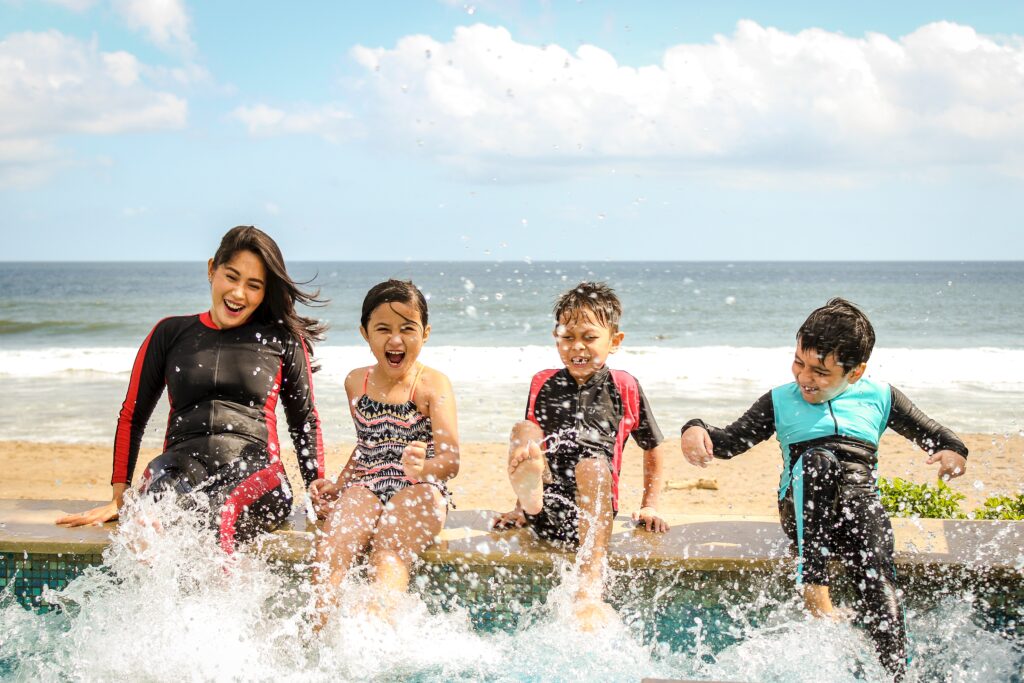
Long summer days and hot weather are here, and that means pools are bustling and families are spending more time in and around water. Whenever you and your family make a splash, it is important to always be vigilant in and around the water, especially with young children. The U.S. Consumer Product Safety Commission (CPSC) offers a number of safety tips to prevent drownings as a part of its Pool Safely public education campaign.
Child drownings remain the leading cause of death among children ages 1 to 4 years old. And from 2018-2020, an average of 371 children under 15 died by drowning in a pool or spa every year. 75 percent of those children were younger than 5, and 80 percent of the drownings in known locations occurred in residential pools and spas.
Other key findings from the CPSC report include:
- In 2022 alone, there were 6,400 non-fatal drowning injuries estimated for children under 15.
- Children under 5 years also made up 91% of children who fatally drowned in residential settings—the most common drowning environment.
- CPSC data show stark racial disparities in drowning fatalities under age 15. Where race was identified, African American children made up 21% of fatal drownings while making up only 15% of the population. 45% of 5-14 year-olds who fatally drowned were African American. Black children continue to drown at higher rates and, according to USA Swimming, have disproportionately lower swimming ability than White children.
While it is impossible to completely eliminate the risk of drowning, there are several proactive measures you can take to help keep kids safer in the water, including these Pool Safely simple safety steps:
- Supervise Children at the Pool: Never leave children unattended in or around water. Even if a lifeguard is present, always designate an assigned Water Watcher to supervise young swimmers without any distractions.
- Teach Kids to Swim: Make sure that children receive proper swim instruction and are comfortable in the water. Your local YMCA or community center can be great places to register for free or reduced-cost swimming lessons.
- Ensure Pools Have Federally Compliant Drain Covers: Make sure pool drains comply with the Virginia Graeme Baker Pool and Spa Safety Act and teach children to keep away from drains to avoid dangerous entrapments.
- Install Proper Safety Barriers at Your Pool: Install important safety barriers like self-latching gates, pool door alarms, and non-climbable fences to prevent unsupervised children from accessing pools and spas. Check for these barriers when you are at a friend’s or vacation home pool, too.
- Get CPR Certified: Learn how to perform CPR on children and adults to intervene quickly in case of emergency.
For more information about each of these steps, visit: https://www.poolsafely.gov/parents/safety-tips/.
While pools may be an obvious drowning risk, young children can also drown in hidden hazards found in the home such as appliances or containers including bathtubs, buckets or toilets.
CPSC has important safety tips for you to help prevent in-home drownings too:
- NEVER leave a baby alone, or with young siblings, in a bathtub even for a second. Always keep a baby within arm’s reach. Children can drown quickly and silently.
- Keep the toilet lid down, and keep young children out of the bathroom when unsupervised. Consider placing a latch on the bathroom door out of reach of young children.
- Be sure all containers with liquids are emptied immediately after use. Do not leave empty containers in yards or around the house where they may accumulate water and attract young children.
- Always secure the safety cover on your spa or hot tub.